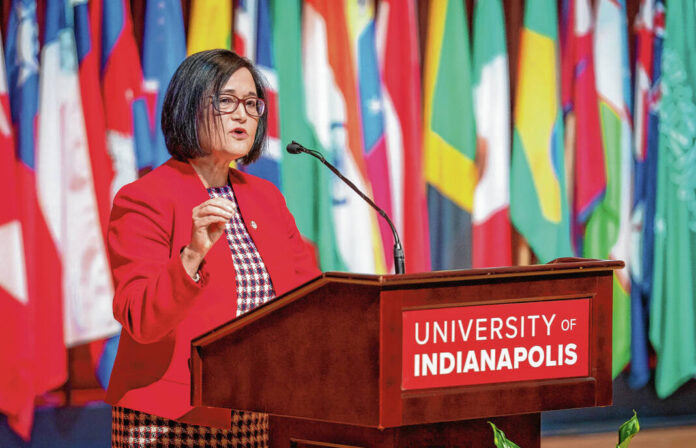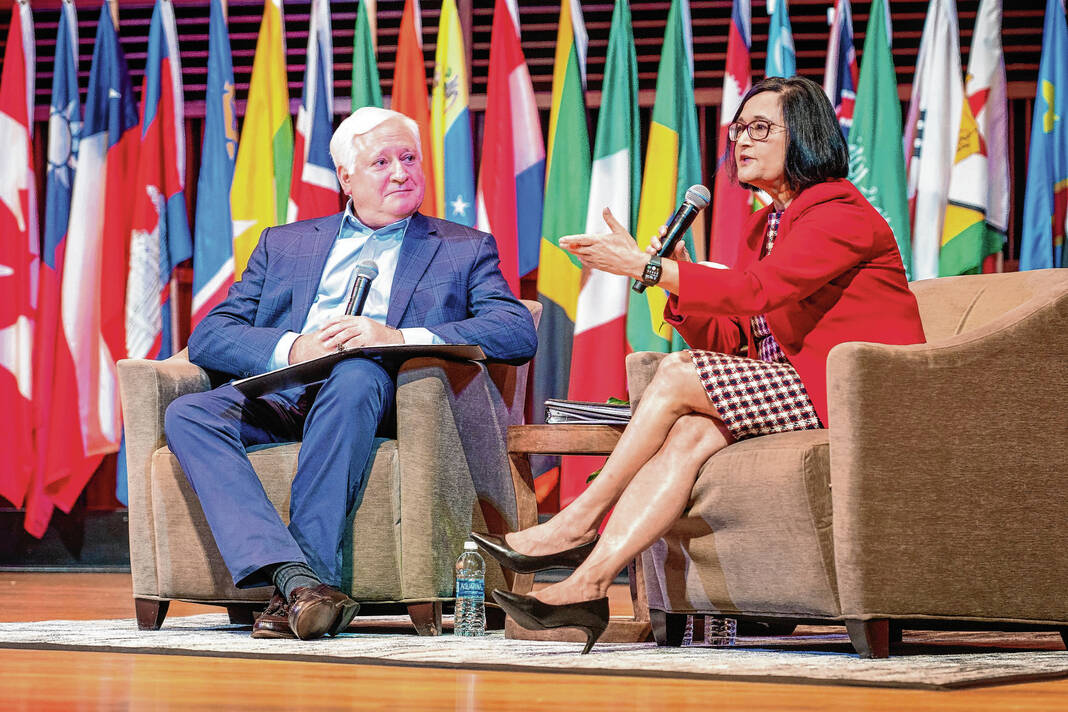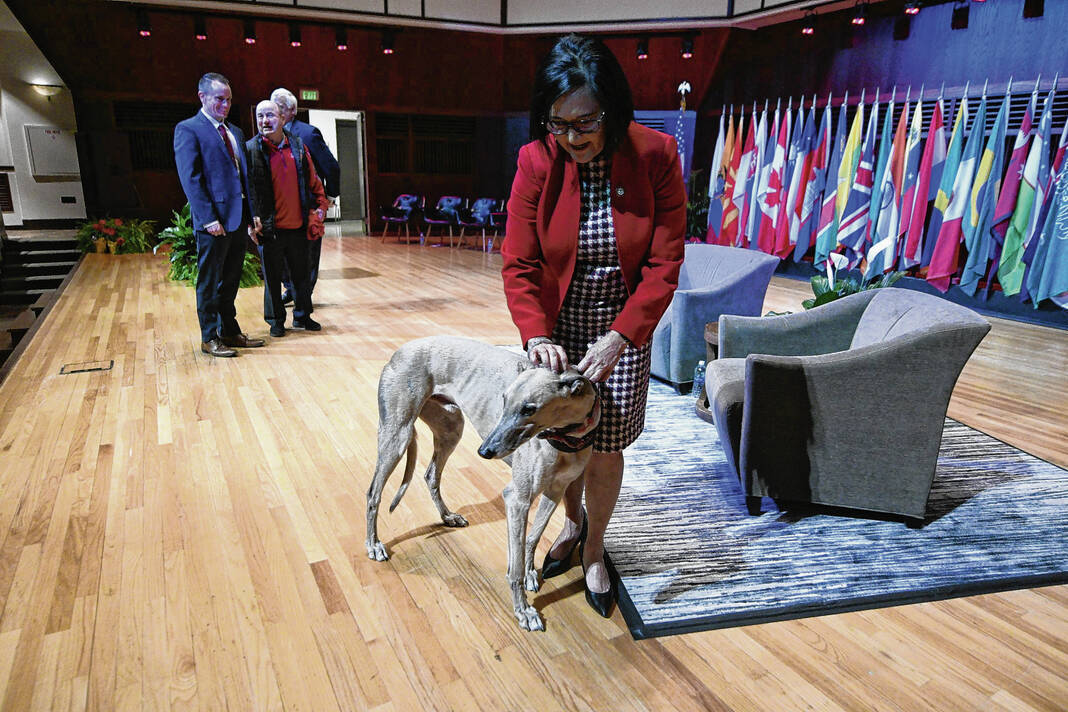The next president of the University of Indianapolis brings with her decades of experience in higher education as part of a journey that started in India.
UIndy leaders introduced Dr. Tanuja Singh as the college’s 10th president, succeeding interim president Phil Terry, during a ceremony at the Ruth Lilly Performance Hall Tuesday morning. The selection caps a search that included over 100 applicants and nominations, said Deborah Daniels, vice chair of the college’s Board of Trustees and a member of the presidential search committee.
“Dr. Singh stood out for her deep understanding of academia, industry and that the larger community should work together to create positive outcomes and address the challenges facing both students and higher education,” Daniels said.
When she takes over leadership July 1, Singh will be the first woman of color to lead the southside college.
“It is important in my mind as a female and a woman of color, for students to look at me and see the opportunities available to them in their lives,” Singh said. “It’s a country of great opportunity no matter your background. If I can be a role model to women and women of color, it’s a big privilege and honor.”
Singh, currently the provost and senior vice president of academic affairs at Loyola University in New Orleans, served as dean of the Greehey School of Business at St. Mary’s University for 11 years and worked at Northern Illinois University for 13 years, where she held roles as department chair and professor of marketing. She earned a doctorate in business administration from Southern Illinois University, a Master of Business Administration from Millsaps College in Jackson, Mississippi and a Master of Science degree in physics from the University of Allahabad in India, according to a UIndy news release.
Terry will finish his one-year interim term, which started July 2, 2022 after previous president Robert Manuel departed for DePaul University in Chicago. President-Elect Singh has already started working with Terry as she prepares to transition into the role.
“He has a unique combination of skillsets. He worked in industry and led the institution successfully in the past year,” Singh said. “He knows what the challenges and opportunities are and what decisions need to be made. We will continue to be partners even after I start here.”
Singh steps into the role as college officials brainstorm ways to overcome a demographic cliff, a term used for the projected decrease in the number of 18-year-olds eligible to enroll in college because of a declining birth rate. The birth rate in the United States has declined markedly since the 2008 recession, from 69 births per 1,000 women in 2007 to 56 in 2020, meaning there will be a decline in eligible college freshmen starting in 2026, according to the Centers for Disease Control Vital Statistics Report.
One way to address the challenge is to address employment needs in university offerings, Singh said.
“There are lots of opportunities in certain disciplines,” she said. “We’re talking about the number of nurses we need, everything from supply chain to engineering are growth areas. We need to make sure we have programs and talent.”
Singh also listed health care, entrepreneurship, finance and actuarial science as areas with a need for qualified employees.
“My goal is to make sure the degrees they’re getting are helping them delve into fundamental skills, whether it’s complex problem solving or cognitive compatibility,” she said. “Whether you’re a history major or a philosophy major or an English major, I want students to graduate with skillsets that, in my mind, are discipline-agnostic.”
As president, Singh looks forward to building relationships within the college and in the community surrounding it, she said.
“One of the things I’ve done in all my careers — when I was a faculty member, when I became a dean and when I was provost — is to really connect with people that are both within the university, but also beyond,” Singh said. “Our students are going to work for a not-for-profit, a museum, a science lab, any organization we can think of. Those organizations should know what we are about.”









